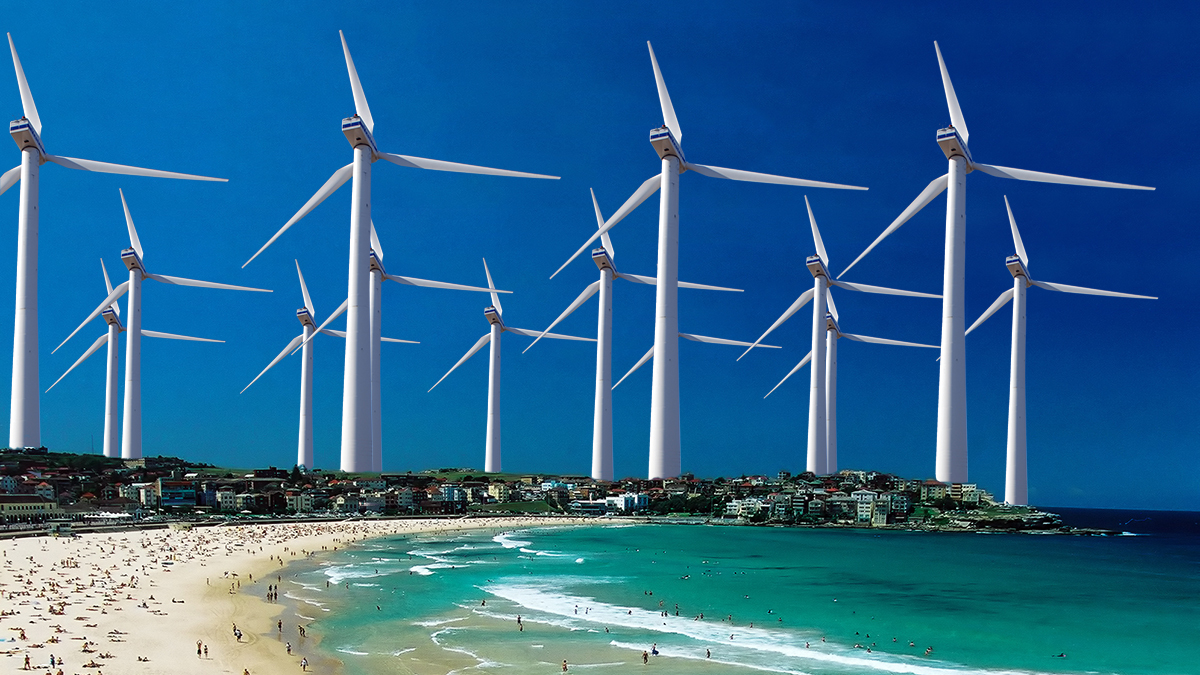Opinion
As I asked recently: is the Climate Cult barking mad? We know they’re not stupid… well, not all of them. Some of them are very smart people. But they’d surely have to be out of their minds: how else could a scientist, an engineer even, say things like this and actually expect us to applaud it as a good thing?
Our energy system is a behemoth nourished on fossil fuels. Replacing that rich diet with lean wind and solar energy is a task of barely imaginable proportions. Think forests of windfarms carpeting hills and cliffs from sea to sky. Think endless arrays of solar panels disappearing like a mirage into the desert. What we have now has to be scaled up by a factor of 20.
It will take mining on a massive scale to extract the minerals needed for batteries and solar panels. It will take giant factories to build the parts for towering wind turbines. It will take untold miles of high-voltage transmission lines to carry the electricity to power the mines and factories and the 24-hour buzz of civilisation […]
We must massively expand mining for energy transition materials: lithium, cobalt, manganese, nickel and graphite for batteries; silver and silicon for solar panels; rare earth elements for magnets in electric vehicle motors and wind turbine generators; aluminium for lightweight vehicles and copper for their internal wiring; platinum and iridium for hydrogen production.
The Guardian
To damn him with faint praise, former Australian chief scientist Alan Finkel is at least honest about what “Net Zero” would look like in reality. Although, notably, he avoids all discussion of cost (apart from blithely assuring readers that solar panels will become cheaper). But that’s OK, his chums at Net Zero Australia have done the dollars — and they’re mind-boggling.
Net Zero’s own figures claim a $9 trillion cost by 2060. A somewhat heroic assumption given the propensity of government projects to blow out their costs. The NBN, for instance, was initially estimated to cost $15 billion. So far, it’s at $70 billion. Julia Gillard’s NDIS was originally “fully funded” at $1 billion — today, it’s costing $15 billion a year.
Even if, barring a fiscal miracle, the cost doesn’t blow out, the sums involved account for 1/6th of Australia’s total annual GDP, every year, for the next 37 years. Put another way: Australia would have to spend as much annually as it did on defence at the peak of WWI… for 40 years.
Far from taking a hard dose of reality salts, though, Finkel claims to be “optimistic”.
Tellingly, he reels out the staggering scale of Net Zero in the form of a dialogue at an elite dinner party. This hints at a harsh truth about the Climate Cult: these inner city, ivory tower elitists can happily gloss over the shocking fiscal and environmental cost of Net Zero, because it won’t affect them.
The Greens and Teal voters, the richest voting bloc in the country, will never have to choose between heating their homes or eating. The harbourside and inner city suburbs where they live will never be blighted by a “forest of windarms”, or “endless arrays of solar panels”. Their children will never slave to mine cobalt, or live next to the toxic lakes its refining leaves behind.
No — none of that for them. It’s other people who’ll have to make the sacrifices — as is ever the way with leftist utopias.
Would the residents of the seats of Kooyong, Warringah or Wentworth be happy to have their parks, empty land and adjoining water ways – perhaps some big backyards? – handed over to mainly overseas-owned renewable energy developers to construct intrusive and sometimes noisy installations in the quest of decarbonisation?
We all know the answer to that question. But the members for these seats (and others) are more than happy to impose the external costs on their country cousins and create unfortunate divisions within previously harmonious rural communities.
Try to imagine the wealthy Green and Teal voters in Kooyong, Warringah or Wentworth tolerating for a single second any proposal to run thousands of kilometres of new transmission lines through their upscale suburbs. They’d be apoplectic.
The “sea change” boomers who’ve infested coastal towns would be rattling their Zimmer frames in outrage over offshore wind, too.
Turbines as far out as 10 to 15 kilometres from the coast can still be seen from land. Again, the rational response from those who live nearby, including retired sea-changers, is to oppose these developments. Moreover, there is mounting evidence these turbines, which require enormous amounts of concrete to fix them in place, can interfere with marine life, including migrating whales.
The only hope is that harsh economic reality will win out. Offshore wind is even more incredibly expensive that its ugly, land-based cousins.
The large Swedish renewable energy firm, Vattenfall, has recently stopped two major projects – one in the UK – citing higher inflation and capital costs. The huge losses incurred by the wind division of Siemen Energy are also noteworthy. The only way offshore projects will proceed in Australia is if the operators are given even more subsidies than are currently on the table, which will translate into even higher consumer prices.
The Australian
Well, we know how that will go. The “renewable” industry is already one of the most assiduous hoovers of public money in the country. It’s hardly likely green-left politicians will need much encouragement to shovel even more taxpayer dollars into their gaping maws.
After all, it’s other people’s money: they’re used to wasting it by the truckload.

